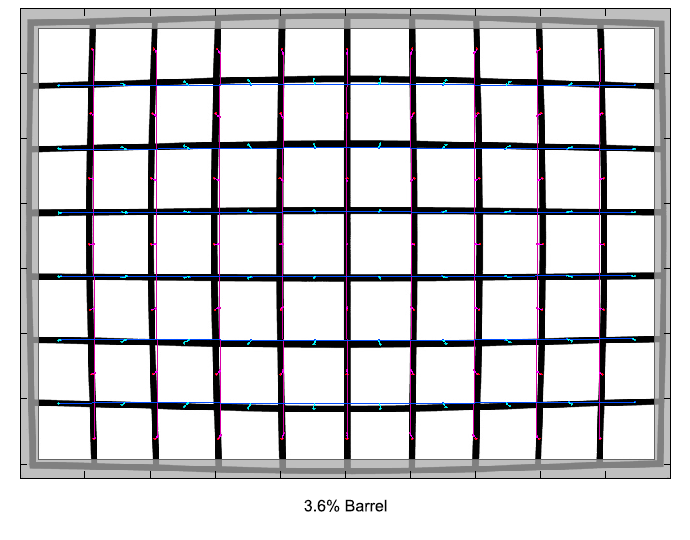|
Page 2 of 3

Distortion
The lens shows a significant amount of barrel distortion at the shortest focal length, which decreases by zooming in. At around 28mm the lens is basically free of distortion. Zooming in further, the distortion changes to the pincushion type, but remains moderate.
|
Move the mouse cursor over the focal length text marks below to observe the respective distortion
|
| 17mm |
21mm |
28mm |
35mm |
|

|
The chart above has a real-world size of about 120x80cm.
Vignetting
For a wide angle lens, the Tamron is quite fast and so it’s not really surprising that the lens shows some vignetting. This is especially true at 17mm, where the light fall-off towards the borders reaches an amount beyond the scale of our graph. Stopping down eases the issue slightly, but even at small apertures there is still one stop ov vignetting left.
The behaviour is similar at 21mm, but with a slightly lower amount of vignetting.
Zooming in further, vignetting is no longer really an issue, at least at medium apertures an beyond.
We're performing our vignetting analysis based on
(uncorrected) JPEGs straight from the camera. The JPG engine of the Nikon D3x features a rather flat
gradation curve, thus has a moderate contrast characteristic, resulting in comparatively low vignetting figures - the
corresponding Canon figures are roughly 40% higher due to the more
aggressive default contrast setting.

MTF (resolution)
Let’s start with the good news: the center resolution of the lens is very good wide open and excellent stopped down at all tested focal lengths.
The borders and extreme corners are a very different story, though. At large apertures, the borders and especially the corners are quite soft. The lens needs to be stopped down to produce acceptable sharpness here. However, at around f/8, it is able to produce at least good sharpness across the whole frame.
Please note that the MTF results are not directly comparable across the different systems!
Below is a simplified summary of the formal findings. The chart shows line widths
per picture height (LW/PH) which can be taken as a measure for sharpness.
If you want to know more about the MTF50 figures you may check out the corresponding
Imatest Explanations

Chromatic Aberrations (CAs)
Lateral CAs (color shadows at harsh contrast transitions) are quite pronounced, reaching peak values of almost 3 pixels at the image borders.

|